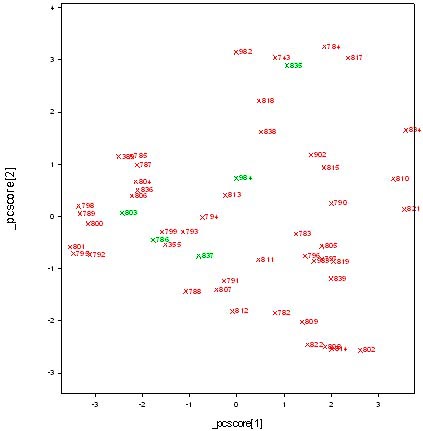Statistical modelling
The five eventually selected 'best-bet' accessions are shaded in green in the scatter plot of the two principal components. Four (coded 786, 803, 837 and 984) are in close proximity in the central left of the diagram suggesting that they had similar morphological characteristics. As shown by from their principal component coefficients these strains tend to have less hairy leaves. These tend to be favoured by farmers as they are not so rough on their hands; also animals find less hairy strains more palatable. The fifth, accession no. 16835 (code 835) is in the top right of the diagram, away from the other four, tending to have smooth leaves and small rhizomes. There are options in the dialog box to base the principal components analysis on either a matrix of sums of squares and products or the variance covariance matrix or a correlation matrix. Because the variables vary in magnitude we have used the correlation matrix, which has the advantage that the derived principal component is not unduly weighted to those variables with the largest values and correspondingly large sums of squares. |
 Study A
Study A